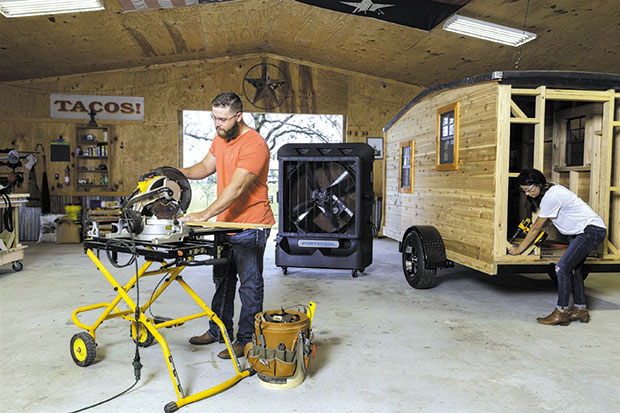Quarantine and social distancing means spending more time at home. This has inspired renewed interest in home improvement and DIY projects. While warm-weather months are ideal for many projects, they also can bring high temperatures and dangerous heat. To avoid heat-related illness and injury, it is important to take precautions to stay safe.
Heat-related illnesses include heat stroke, heat exhaustion, heat cramps, sunburn and heat rash. In extreme cases, overexposure to heat can cause death. According to the National Weather Service, heat causes the greatest number of weather-related injuries each year. In fact, an average of 138 people have died annually due to heat over the last 30 years.
In addition to making a supply list, gathering tools and researching steps to ensure your project is a success, be sure to take heat safety measures as well. Here are some tips for staying safe and cool while tackling home improvements in hot conditions.
BE SUN SMART
Being in direct sunlight not only heats your body faster due to solar radiation, but it’s also a risk for sunburn. When working on projects, choosing a shaded spot is optimal. If starting in the early morning, be sure to account for sun position within your working time. Set up umbrellas and other coverings ahead of getting started so you won’t be tempted to work through the hot overhead sun. Additionally, remember to wear sunscreen with SPF 30 or higher and to reapply every few hours. Choosing light, airy cotton clothing that covers the arms and legs is an easy way to protect from the sun and keep you cooler.
USE PORTABLE EVAPORATIVE COOLERS
Outdoor spaces like patios, decks, garages or sheds can get extremely hot when you’re just relaxing, let alone working on projects. To stay cool outdoors, consider a Portacool portable evaporative cooler that generates cooling relief by using water and the ambient air to provide cooling through natural evaporation. This evaporation is akin to the cooling sensation you feel when you get out of a pool. It works where traditional air conditioning cannot, especially outdoors, on patios or in spaces with open doors such as garages, sheds and barns. These energy-efficient coolers can cool spaces ranging from 300 to 4,250 square feet, and their portability means they can be rolled where you need it — and transition from daytime projects to afternoon and evening enjoyment such as grill-side alfresco dining. Learn more about these made in the USA coolers at portacool.com.
TAKE BREAKS AND HYDRATE
Sometimes you get so focused on a project that you don’t realize you have not hydrated enough or have pushed yourself too far until it’s too late and you feel sick. That’s why prioritizing regular breaks is essential. Consider a work/rest schedule.
For example, when doing moderate work at 100 degrees, the Centers for Disease Control and Prevention recommends you should work for 45 minutes and then take a 15-minute break. Use this time to drink extra water to stay hydrated. Above all, always listen to your body. If you feel dizzy or sick, don’t wait to take a break.
CHECK THE FORECAST
Before diving into a project, check the weather forecast first. You want to do more than just avoid rain; you want to plan work to coincide with cooler temperatures. That may mean waiting a few days or more if there’s a heat wave, but your health (and likely productivity) will benefit. In addition, check the heat index expected when you work and plan around the hottest times of the day. Try to work earlier in the morning when it’s cooler and your energy is fresh. If you can’t finish the project before the heat peaks, take a break and finish when the sun goes down or the next morning.
It’s smart to jump on the DIY wave and add important home improvements to boost your home’s livability and value. While you’re working hard to reach your goals, be sure to use these heat safety steps to stay comfortable and healthy.
This article is courtesy of Brandpoint.
